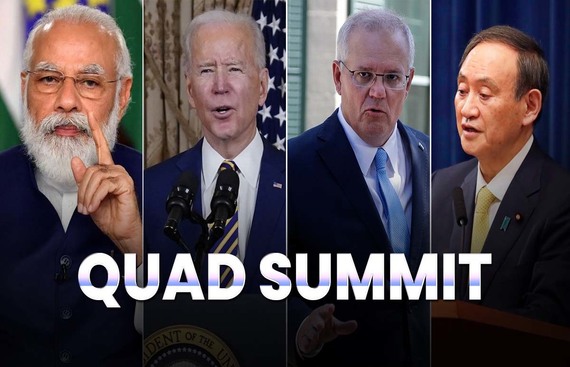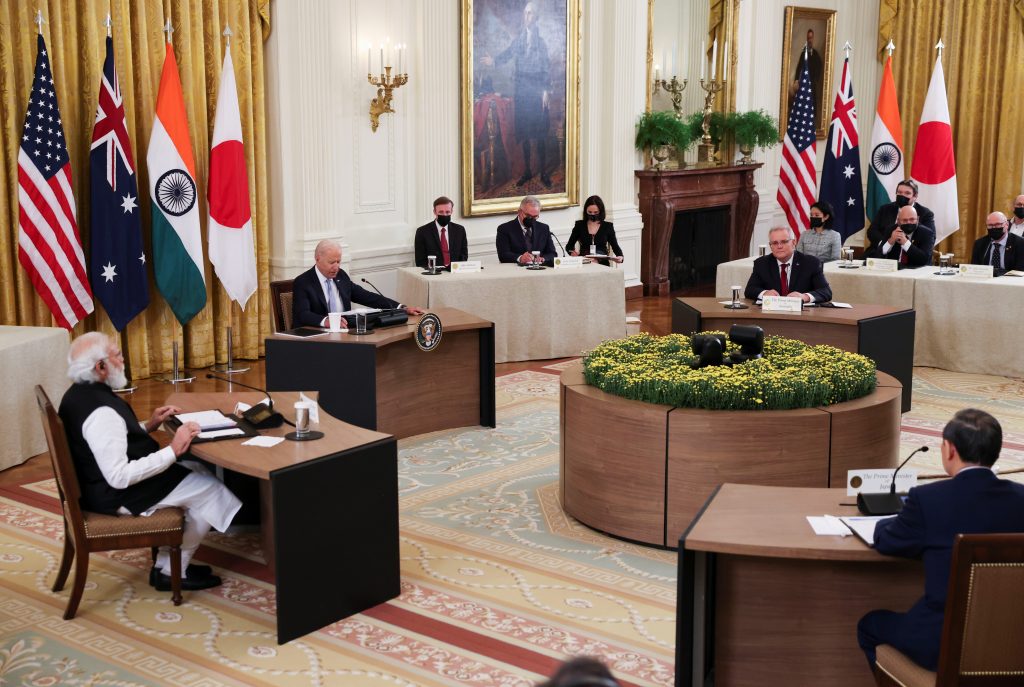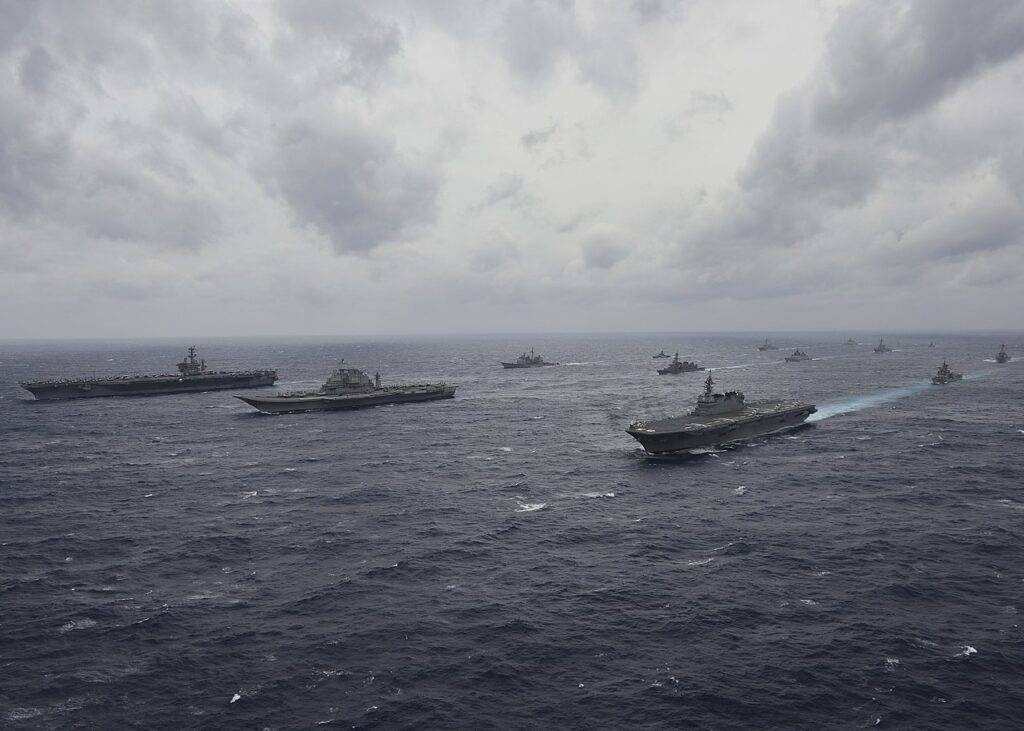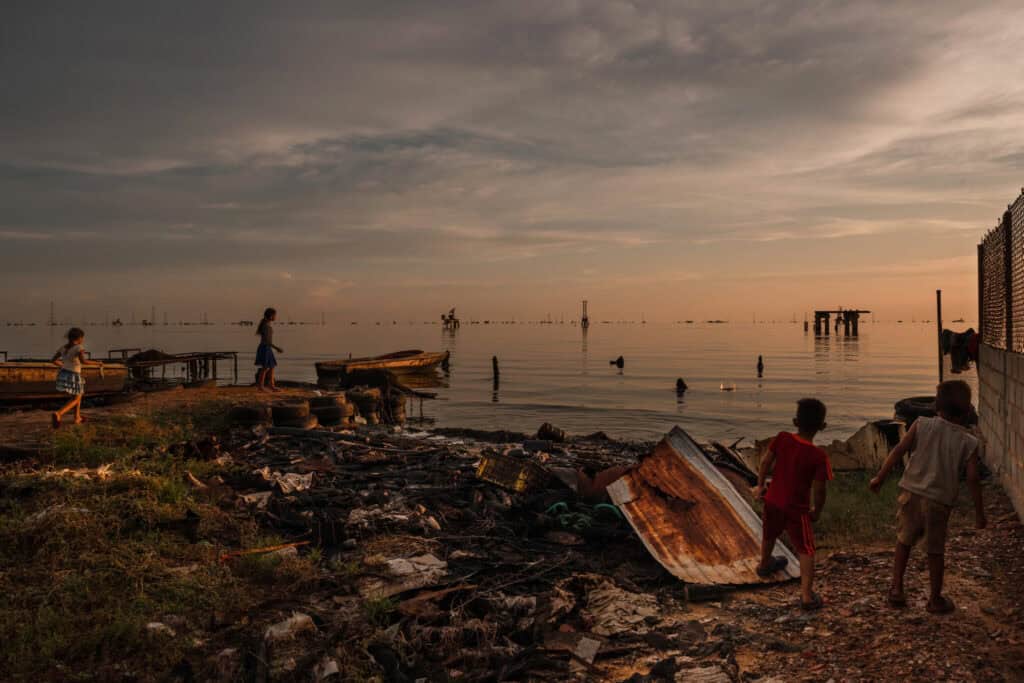The Quad, initially a security dialogue between the USA, India, Japan and Australia, was established in 2007. The aim of this strategic dialogue was to counter the rise in China’s economic and military power. The first in-person Quad Summit hosted by the United States included leaders from three countries- Prime Minister Narendra Modi from India, Scott Morrison from Australia and Yoshihide Suga from Japan. The leaders met on 24th September 2021 at the White House to discuss vital initiatives and the challenges of the forthcoming decade. Some of the broad issues covered in the session include- battling the COVID-19 pandemic, increasing accessibility of safe and effective vaccines, fighting climate change, introducing new technologies etc.

The issue requiring immediate attention, as recognized by the Quad leaders, was the threat to human life and livelihood due to the pandemic. In accordance with this, Quad Vaccine Partnership was launched in March by the leaders to ensure access to safe and dependable COVID-19 vaccines with a primary focus in the Indo-Pacific. The Quad has successfully managed to expand the manufacturing capacity of COVID-19 vaccine since March while also donating from its own supply.
In its recent meeting, the leaders pledged to further expand manufacturing to produce 1 billion doses by the end of 2022. One of the primary goals for the Quadin these trying times is to save lives in the Indo-Pacific. To this effect, Japan has decided to work with India and enhance investments in the health-care sector to combat COVID. The Quad has also committed to increase its preparedness for the next pandemic. Cooperation in the fields of science and technology to support the 100-Day Mission i.e., access to effective vaccines and other therapeutics within 100 days has been considered the need of the hour.
Climate change is a pressing issue and the Quad countries have decided to focus on themes of climate ambition and targeting 2030 goals of national emissions and renewable energy. The 2020s in the Indo-Pacific region would see enhanced action to meet the energy demands while also actively decarbonizing to keep up with the climate goals. The Quad Shipping Task Force will involve the leading ports of the word such as Los Angeles, Mumbai Port Trust, Sydney and Yokohama to form a network with the goal of greening and decarbonizing the shipping value chain. A commitment to increase the Indo-Pacific region’s resilience to climate change was also made by improving climate-information sharing and infrastructure aimed for disaster-resilience.
The education sector would see new developments in the coming years with a primary focus on science and technology. The Quad leaders announced a Quad Fellowship which would be a scholarship program with the aim of bringing together American, Indian, Australian and Japanese students with masters or doctorate in science and technology, mathematics etc. for further education in the United States. This fellowship would help form a network of experts involved in advancing innovation among the Quad countries. This fellowship would also help in better understanding of cultures and societies with regular trips to each Quad country.

Cybersecurity was another topic of interest among the leaders, wherein it was decided that efforts would be made to strengthen the infrastructure resilience against cyber threat. To this effect, a Quad Senior Cyber Group would be launched including experts who would meet regularly and work towards improving adoption and implementation of cybersecurity standards, developing talent and secure software. Cooperation in space operations which is a new development among the Quad countries would ensure exchange of satellite data protecting Earth and its waters, focusing on climate change to adapt and monitor it and managing disaster preparedness of all member nations.
Although not explicitly stated, The Quad Summit was an agreement for the USA and its allies in the Indo-Pacific to stand up to China. It enabled the member nations to establish that they can come together to ensure that the rule-based order is in place. When on one hand China is trying to challenge the status quo, the Quad leaders’ commitment towards the rule of law and peaceful resolution of disputes is a clear indicator of their opposing stance. India’s position in international politics has also seen a change over the years. Before it’s altercations with China in early 2020, India had maintained a non-aligned status but a clear yet gradual shift in its foreign policy is visible. The Summit reinforced this shift towards the United States and the West.

Europe’s growing interest in the region is worth noting with the EU Strategy for Cooperation in the Indo-Pacific aimed at deepening Europe’s engagement with nations in the Indo-Pacific, the Quad however has not expressed any desire to expand the group. A key feature of the Quad is its cohesive goals and shared concerns over China which will prove advantageous in making quick progress on important issues. The first phase of the Malabar naval exercises occurred in August this year near Gaum which included forces from the Quad countries, the second phase of the exercise is slated for October 12-15th in the Bay of Bengal. It is evident that the USA and its Quad partners are ready to cooperate on domains ranging from climate change, health, security, defence etc. all areas in which China is trying to dominate the world and USA’s engagement in the Indo-Pacific is strategically important.
Written By- Sakshi Shah
Edited By – Khyati Kallianpur




